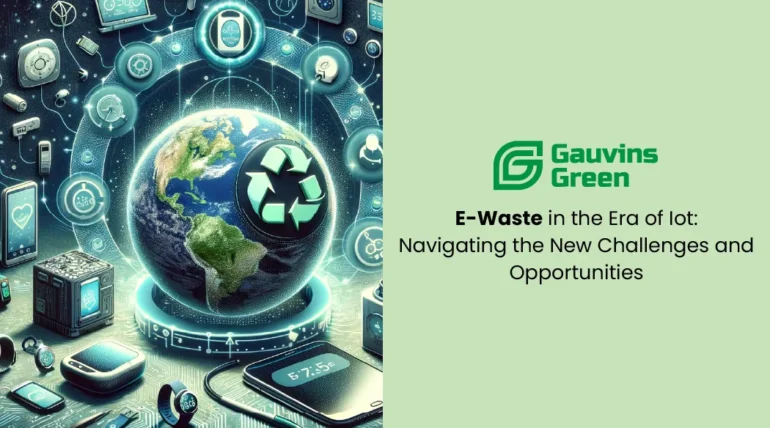In an age where technology evolves at breakneck speed, the rise of the Internet of Things (IoT) has added a new dimension to the challenge of managing electronic waste. IoT devices, from smart thermostats to fitness trackers, are becoming ubiquitous in our daily lives. As a leading entity in e-waste management, Gauvins Green is at the forefront of addressing the unique challenges posed by the disposal of these devices. The era of IoT has not only multiplied the volume of e-waste but also complicated its recycling processes.
Understanding the Impact of IoT on E-Waste
The Internet of Things (IoT) refers to the network of physical devices embedded with sensors, software, and other technologies for the purpose of connecting and exchanging data with other devices and systems over the Internet. These devices, often designed for convenience and efficiency, unfortunately, contribute to the burgeoning e-waste crisis when they reach the end of their life cycle.
Gauvins Green recognizes that with IoT devices, the e-waste issue isn’t just about volume; it’s about complexity. These devices contain a mix of materials and components, some of which are recyclable, while others pose environmental hazards if not properly treated.
The Recycling Challenges of IoT Devices
One of the primary challenges in the e-waste recycling of IoT devices is data security. Unlike traditional electronic waste, IoT devices are often repositories of personal data. Ensuring this data is securely destroyed before recycling is paramount. At Gauvins Green, we employ advanced data destruction techniques to address this concern, ensuring the privacy and security of our clients.
Another challenge is the diverse and intricate composition of these devices. IoT devices contain a variety of components, including batteries, sensors, and circuit boards, each requiring specialized recycling processes. Gauvins Green’s state-of-the-art e-waste recycling facilities are equipped to handle this complexity, ensuring each component is appropriately processed.
Seizing the Opportunities in IoT E-Waste
Despite these challenges, the e-waste in the era of IoT also presents new opportunities. There is potential in recovering valuable materials from these devices. Precious metals like gold, silver, and copper, found in circuit boards and components, can be extracted and reused.
Furthermore, the rise of IoT e-waste has spurred innovation in recycling technologies. At Gauvins Green, we continuously explore new methods and technologies to enhance our recycling capabilities, staying ahead of the curve in e-waste management.
Shaping a Sustainable Future
Gauvins Green is committed to not only addressing the current e-waste challenges but also shaping a sustainable future. Through our efforts, we aim to raise awareness about the importance of responsible e-waste recycling, especially in the era of IoT. Our goal is to encourage the adoption of sustainable practices in the use and disposal of electronic devices, contributing to a healthier planet.
Conclusion
The era of IoT has undeniably transformed our lives, but it also demands a greater responsibility towards the environment. As an e-waste management leader, Gauvins Green is dedicated to navigating these new challenges and opportunities, ensuring that the digital advancements of today do not become the environmental burdens of tomorrow.
FAQ’s
1. What is the impact of IoT devices on e-waste?
IoT devices contribute significantly to the growing volume of e-waste due to their short lifespans and rapid turnover. These devices are not only more numerous but also more complex than traditional electronics, which presents new challenges in e-waste recycling, especially in terms of data security and the complexity of materials used in IoT devices.
2. How does Gauvins Green handle the unique challenges of recycling IoT devices?
Gauvins Green employs advanced techniques to ensure data security during the recycling process of IoT devices. This involves securely erasing any personal data before recycling. Additionally, we use specialized processes to handle the diverse and intricate components found in IoT devices, ensuring that each part is appropriately processed and recycled.
3. Can valuable materials be recovered from IoT devices through recycling?
Yes, IoT devices contain valuable materials like gold, silver, and copper, especially in circuit boards and electronic components. Through advanced recycling processes, these precious metals can be extracted and repurposed, thereby reducing the need for new material extraction and contributing to a circular economy.
4. What can individuals do to responsibly dispose of their IoT devices?
Individuals should seek out responsible e-waste recyclers like Gauvins Green for their IoT devices. It’s important to ensure that these devices are not thrown away with regular trash but are instead properly recycled. Additionally, individuals should consider the lifespan and repairability of devices before purchasing, to minimize waste.


